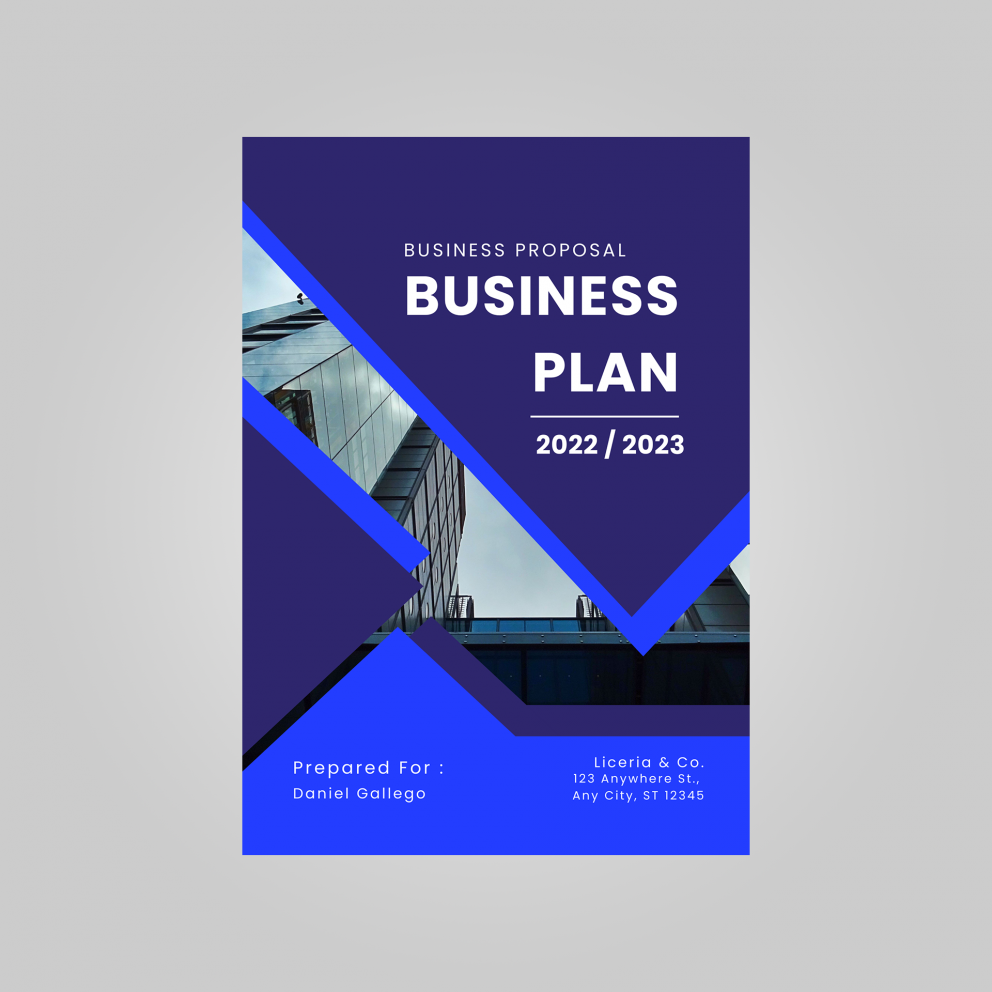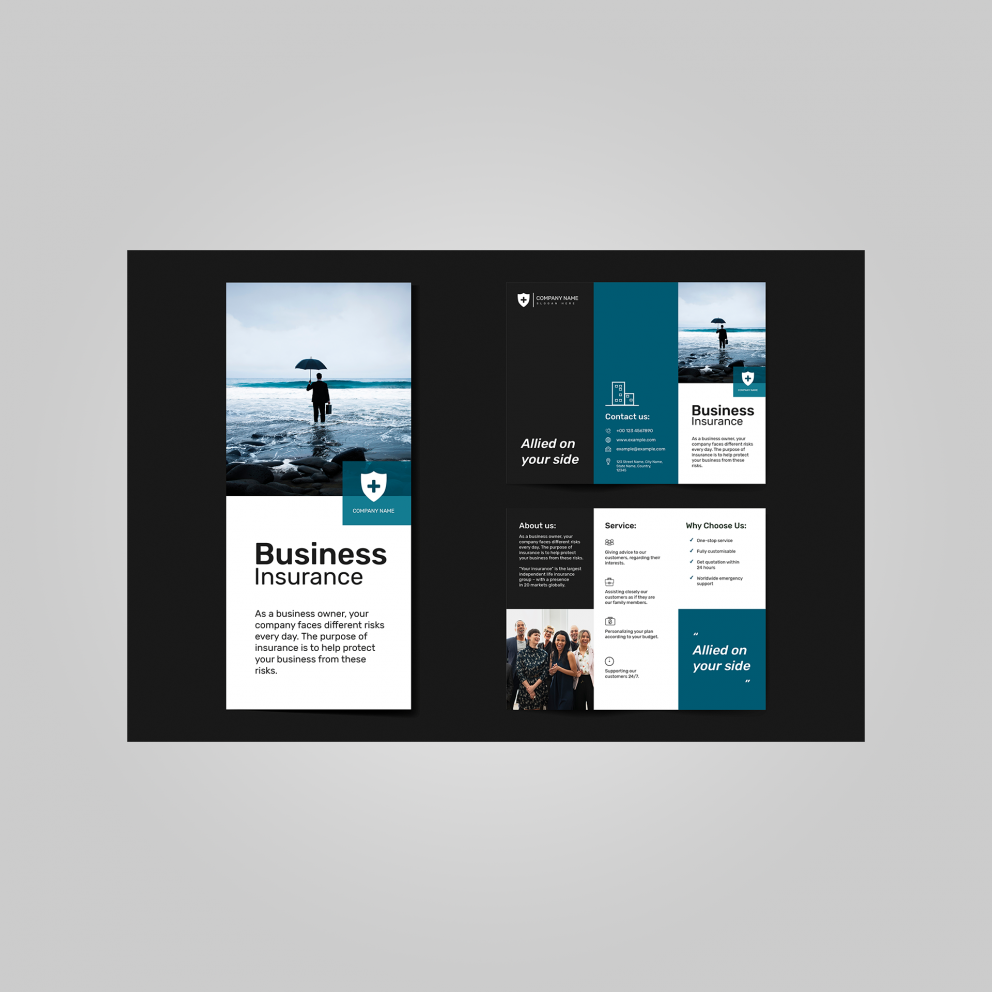How to Write a Business Plan Step by Step
What is a business plan and why to write it?
A business plan is a document that outlines your company's financial objectives and how you intend to attain them. Writing a business plan is often the first step in launching a new venture and preparing a marketing strategy for the entire brand. Although, in the past, it was usually created as a paper document, nowadays, it much more often takes the form of an online proposal .
Business plans may assist you in obtaining money from the government, local government, or other organizations, as well as attracting new business partners. Once you present your financial projections, market analysis, and market research in the convenient executive summary form, potential investors will know that they will receive a good return on their investment. A well-written business plan demonstrates that you know your sector and have expertise.
Writing a business plan will lead you through each aspect of starting up and operating your firm, serving as a roadmap for the entire structure, operation, and development of your new venture. It is also a vital plan for considering fundamental ideas of your company, such as recruiting practices and growing into overseas markets.

You may also build a business plan to demonstrate your industry expertise. It's an executive summary of your company, a description of its goals and ideas. Even though not all successful businesses begin with a formal business plan, they always have some policies and objectives - a business plan is simply documented policies and goals that you wish to reach eventually.
A business plan is not a static document; it will evolve and change as your business grows. The process of writing a business plan is often more important than the final product. It forces you to think through the important aspects of your business, including your value proposition, marketing strategy, financial projections, and operational plan. By working through the process of writing a business plan, you will gain a better understanding of your business and what it will take to succeed.
In this article, we will explain all the main steps of writing a business plan, how to prepare it for the target market and use it in your marketing and sales strategy. We also present the business plan template gallery you can use after you write a business plan to present it in an attractive manner.
Before you start writing a business plan
Before you start writing down your plan, remember that your business plan must be understood by the reader. For example, if your business is in a highly specialized market, you are probably the specialist in your field and know the target market in and out. But if you're applying for funding, no one outside the industry will understand your slang. Take care with definitions, explanations, and use a lot of simplifications.
Many business readers don't have time to wade through difficult language or a lengthy business plan. Some specialized readers may want to see more detail, especially if they want to invest money on the basis of a solid business plan. However, overworked business people are generally more likely to be interested in just general numbers and simplified information, so we always recommend that you keep your written business plan as short as possible for your potential customers or investors.

The length of a business plan can range from one page to many pages - assuming each page is filled with content or illustrations. There is no one recommended method for developing a good business plan, but it is useful to base it on the target customer. Business plans can be divided into several groups.
-
Traditional . These are the most common types of a business plan. A typical business plan can take more time to write and can involve creating dozens or even hundreds of pages. This business plan model is required to attract venture capital firms and lenders.
-
Lean . Today, a lean business plan is a very popular method of creating a business plan. The structure is the same, but it contains only the most important data. Companies often use this plan to train newly hired employees, as well as to revise current plans or devise new marketing tactics.
-
Non-profit. A typical nonprofit business plan contains everything found in a conventional or lean business plan, plus an additional section explaining positive effects of charity activity. Such plans can be created by charitable organizations or NGOs. It's a good point to present a market analysis and marketing plan in the business plan format using the executive summary, even if you don't run a business - in this way you can focus on your mission statement and secure funding more easily.
-
Mini . The mini business plan is very similar to the lean one, but it is much shorter. Traditional business plans can take hundreds of pages, lean ones - thirty but a mini-business plan can be just a presentation and a set of notes. This option is ideal for small businesses that need to quickly develop a business plan to get started.
There are dozens of business plan template sites that can help you create a professional-looking business plan quickly and easily.
How to write a traditional business plan in 8 steps?

Start with an executive summary
It's important that you include an executive summary for readers at the very beginning of your business plan. For example, a busy bank manager only has 10 minutes to review the introduction - so make it easy for them! At the very beginning of your business plan, you should include a statement of purpose of your business or business idea, a brief explanation of your products or services, and an overview of your financial development plans.
The introduction to your plan must first and foremost explain why the reader should trust you and your company. In the business plan, you should describe what you want to accomplish with your business and what unique skills you have that offer a competitive advantage over other businesses.
Here are some basic things you should include in your executive summary: a brief description of your company's mission and vision, a description of the characteristics of your products or services, information about your target market, and so on. It is important for potential investors to learn about your company and how it works, what you offer, and how you stand out from your competitors.
In the next step, briefly describe your financial statements and accounts, and how the investment will be used to generate profits for your business. The financial health of your brand might be crucial in many aspects. However, do not exceed one or two pages.

Introduce your company and create a mission statement
You must start a traditional business plan by introducing your company. The reader must understand why you are in business, what makes you unique and why it is worth investing in your company.
This company description should provide the name of your company (in full, according to the law in your country), its physical address, and important information that you can legally provide.
When creating a detailed company profile in your business plan, it is important to include information about the legal structure of your company (sole proprietorship, partnership or corporation, depending on local laws), as this will help potential investors decide how to support your business.
Then provide the names of your company's most important employees - especially those who have important accomplishments, skills, or degrees! Also, describe the history of your company and its current status so that the target audience will be able to understand the subsequent parts of a business plan.
End this section of a business plan by reflecting on what your company's values are - business ethics, treatment of employees, openness, or environmentalism. A mission statement can be written after you have identified your values.
Your company's purpose should be clearly explained in one sentence in your mission statement. For example, "We make metal products of the highest quality." - you can see right away that low price is not necessarily your priority!
Do the research
It's the market that shapes companies, not the other way around. Therefore, if you write a business plan you need to choose the right market for your products - so that you have access to customers who understand and need what you sell. You need to occupy the right niche - whether creating it or pushing out existing competitors.
This is why conducting market research and analysis is an essential part of your business plan. When you write a business plan, it means understanding the market and your place in it. This means knowing who your customers are and what they care about, as well knowing what they need and what they're willing to pay for. You need to understand the market and how you can best reach it.
To convince potential investors and confirm your own beliefs, you need to do extensive research and market analysis for your business plan.
You need to know everything about your target market. If you want to open a board game rental shop, for example, you need to know the leisure habits of your city - whether they play on their own, in clubs, or with their family. If you want to open a restaurant, check how the locals treat customer service, what kind of food they like, and if they are vegan.
Include a comparison of your competitors in your analysis. This competitive analysis allows you to place your business in rankings, and how it compares to market leaders. Compare and contrast your strengths and weaknesses with theirs. If you are targeting a new or undiscovered market, be sure to mention it.
A good way to do this is with a SWOT Analysis. This model of a competitive analysis examines your assets, liabilities, strengths, weaknesses, opportunities, and threats. It will help you know what you can achieve in the market. Of course, it's not perfect - many people don't know their strengths and weaknesses from the inside, and we can't predict all the opportunities and threats. But on the other hand, just trying this idea out will make you see the weaknesses and strengths that you are not aware of.

Present your management team and company organization
This section of your business plan should introduce the people responsible for running your business. Depending on your business model, describe the legal framework of your company. In addition to management, describe who is responsible for what, the company's departments and specialists.
If you plan to employ many people, it is a good idea to draw up an organizational chart in your business plan to indicate who is involved and how each person contributes. Such charts are a great way to show the internal structure of the company, as well as the roles, responsibilities, and relationships between employees. They will come in handy not only when convincing investors, but also when establishing a general business strategy for running the entire company by your management team.
Introduce your products and services
Then, in your business plan, you can dig deeper into the products or services you plan to offer. What is your product or service? Why is it different from others and why should others invest in you?
If you sell a similar product, explain what makes it unique. How much will it cost and how does it compare to similar products on the market? In our restaurant business planning example, think about what makes your restaurant different from any other restaurant - because it's the added value you'll be making money on. It could be the location, customer service, or even the interior design, not necessarily the product - but it's all parts of the experience you're selling.
Also, consider your marketing efforts and advertising strategy. You need to get customers to know what you offer. Identify your target audience and plan exactly how you will present your product to that market. Think about who your target audience is - students, young women, men who play sports - and describe how you will reach them.
Showcase your financial projections
Even if you have a brilliant business idea and put in a lot of effort, time and money, the success of your business will be determined by your bank balance at the end of the month. Investors will definitely be interested in what your plan is for getting money from customers.
It's up to you how much detail you want to include in your financial plan, but in general, you need to include three main aspects of your finances: a cash flow statement, an income statement, and a balance sheet. Cash flow statements can make or break business planning - so think about your income statement before you start thinking of a plan! Fortunately, you don’t have to create one from scratch, as you can easily find an income statement template online to help you get started.
If your business is just starting out, you may not have access to many financial documents yet. In that case, describe your projected revenue and expenses. Established businesses should include in your business plan a statement of income or profit and loss, a balance sheet, or list of assets and liabilities, and a cash flow statement.
To give potential investors and others who read your business plan a better understanding of your company's financial situation, you can include all sorts of charts here as well. This will beautifully illustrate your financial statements and make them easy to understand. Some business plan software can also help you in presenting information in a graphical way.

Add other documents in the appendixes
Include any supporting information or documents that you couldn't include elsewhere in the appendices of your business plans. This can include descriptions of the technology you use, licenses, certificates of access to equipment or premises, receipts, and bills of any kind. Many banks also ask for proof of your creditworthiness.
However, experts say that you shouldn't go overboard in this section of your business plan and include everything that might be useful. Any information included in this section must help support you with your overall business plan.
Publish your business plan on Publuu
When your business plan is ready, you must present it to investors and others. It needs to be a concise and attractive presentation that showcases the plan, your company, and its products. However, many people want to stand out from the crowd.
PowerPoint presentations are not very impressive, and today's business people may not want to wait for you to reach them with your speech. Therefore, the solution to present a traditional business plan is a business proposal with the sensational effect of turning pages. Publuu offers just such an option.
Business proposal created with Publuu are a great solution for showing your business plan and anyone doing business planning should definitely check them out. Your business plan or just its presentation when converted into a digital business proposal will look like a professional publication. Every business person prefers to read the text at their own pace, so it's a great choice for any business owner!
Publuu’s business proposal example
View more business proposal examples
With Publuu, the investor can read the document on any device, from a smartphone to a TV and it will look very elegant. It will include interactive features such as highlighted outbound links, embedded videos and galleries, and other features. Publuu might just be the business plan software you need for your company!
How to write a business plan for a lean startup?
Lean startup is a management and business creation model that is gaining popularity in the 21st century and is being successfully applied by an increasing number of talented entrepreneurs. The lean startup model requires a lean business plan - that does not need much of the information available in a traditional business plan.

Startups are sometimes very flexible, giving you the opportunity to launch your business in lieu of labor-intensive preparation. This also applies to the business plan - it's easy to prepare because your business is fairly simple. The flexible structure of a lean business plan means that you can modify or improve your business plan as your business progresses and grows.
What should you present in a lean business plan?
You need to present your vision for your company. Businesses provide products and services, or solutions to problems for customers. In your business plan, you must present how you provide solutions. This step-by-step guide will help you in creating a lean startup business plan.
Start with a problem you've identified as existing in the marketplace - that's your niche. For example, a board game rental company sees that games are getting popular but are also getting more expensive. This immediately points to your target audience. Lean business plans should delineate the concept first, because it shapes all other aspects of business planning.

Clearly articulate the unique value you bring for the buyer. Which of your customer's challenges are you trying to address with your services? What goods and services are you providing to your customers? What's so unique about your sales strategy? Why should customers choose your services?
Describe your value propositions: the advantages you have over your competitors, skills, distribution model, tools and equipment you have. You can also describe important employees here.
End your business plan with a cost estimate. Just include here a description of the major costs associated with your company's plan and your revenue generation strategies. This way you won't overwhelm the reader with text, and your business plans will remain flexible.
The best tips on writing a business plan
The best tip we can give about writing business plans is to show passion. If you decided to run a company you have to know something about the industry and have a reason to work in it. Let this passion shine through your business plan!

Remember that a business plan requires lots of research - keep in mind good practices: always provide the reader with the sources and the bibliography (even though they might never read it!), be as objective as possible, and clearly demonstrate your points of reference.
And finally, keep in mind the purpose of your business plan: it might be different when you write it for your new employees, or to a prospective investor willing to grant you a business loan. If you have to write it as a part of the application for government grants, your local or federal government might have specific requirements for the format of the business plan. It's a good idea to read them or use business plan templates provided by others.
Business plan template gallery
There are many business plan templates out there - we present only some of the most interesting ones. You can use graphic design software, like MS Publisher, Photoshop or Canva, to make your business plan look great, or use a free business plan template from the gallery.

This simple and minimalistic style can be also used as a great business plan template . Simplicity and contrast create a great visual look.

This business plan template uses splashes of magenta to showcase important information.

Modern triangular patterns give this template some timeless, contemporary feel.

You can use graphic design software like Photoshop to edit this business plan template .

This business plan template was created for a coffeehouse but if you change the graphics you can customize it for your own business.
You may be also interested in:
What is a Business Proposal? A Simple Guide for Your Business
5 Efficient Tips on How to End a Memo



